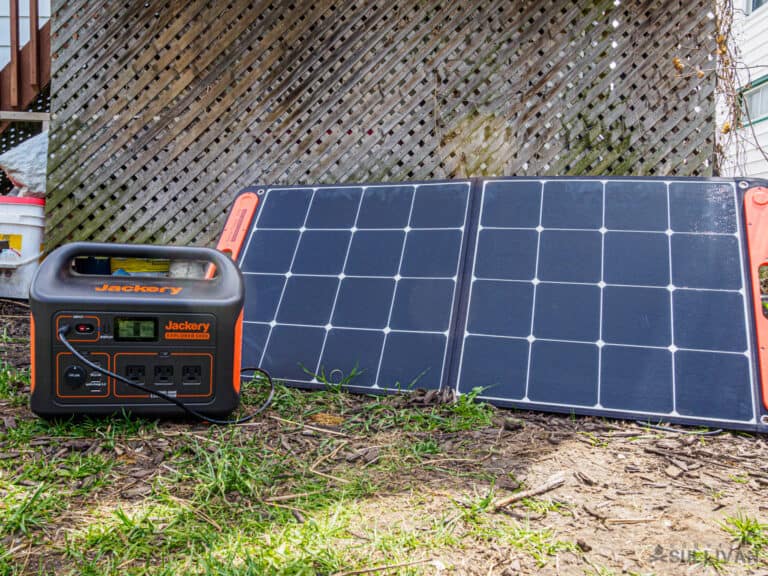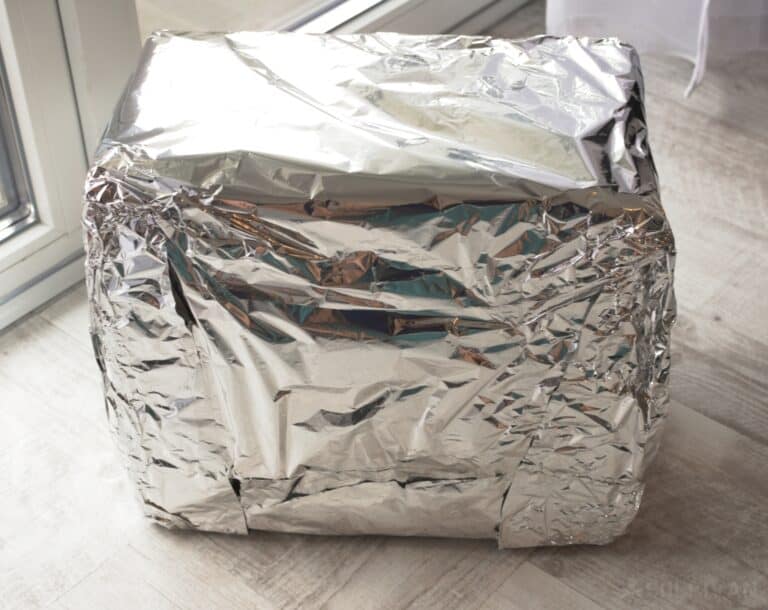One of the biggest threats preppers have been forced to acknowledge in recent decades is that of a major EMP, or electromagnetic pulse. Created by man-made weapon systems and natural solar activity, EMPs will completely knock out our power grid, and likely damage most, if not all, electronic systems and components.

the Jackery Explorer 10000 solar saga solar panel
There are said to be some things, though, that are more resistant to this high-energy bombardment. How about solar panels? Will they continue to work post-EMP?
Probably, though they may be damaged and work at reduced efficiency. Solar panels are surprisingly resistant to the effects of an EMP, but all of your other system components like controllers and batteries are still quite vulnerable and must be protected.
The bad news is that your solar power system must still be protected from this eventuality, but the good news is that the panels themselves are pretty hardy, and it’s easier to protect the other components than you might think. I’ll explain everything in the rest of this article.
The Solar Panels Themselves Are Pretty Resistant to an EMP’s Effects
Let’s start with the good news, and get it out of the way I guess! Your solar panels, or photovoltaic cells, really don’t contain much in the way of circuitry that is so vulnerable to the high-energy emanation that is an EMP. But they do consist of diodes which still direct energy in order to function.
To be perfectly clear, these panels will still be affected, but for most small to medium-sized panels, this is usually just a loss of efficiency or overall output.
This isn’t to say you shouldn’t do anything to try and protect them; you definitely should, but they aren’t the weak link in your solar power system.
Bigger Panels and Arrays Are at Greater Risk
Something else to keep in mind is that the larger the panel, or the larger the array, meaning more panels connected in succession, the more vulnerable your system becomes to an EMP.
That’s because larger systems and panels basically contain groups or modules of photovoltaic cells that are connected to one another with yet more diodes. This lets them act as, essentially, larger antennas that will capture and channel more of the EMP’s energy, meaning that overload and attendant damage are dramatically more likely.
If you have a very large array that is supplying power to your home, outbuildings, and other locations on your property, or to multiple homes, you’ll have to take extra precautions. A single medium-sized panel, or a couple of smaller ones in tandem, probably won’t need their own protection.
Other System Components Are Far More Vulnerable
Now we come to the proverbial fly in the ointment, and one that some solar system owners are, tragically, likely to overlook.
Though the panels themselves should hold against EMPs, other system components definitely are not: Charge controllers, batteries, inverters, wiring, and other components are considerably more susceptible to damage than the panels themselves!
Remember how I mentioned that a large array basically works like an antenna to catch and then channel more of the energy from an EMP?
That electricity flowing into the rest of your system, and into those more sensitive components, will easily result in overload and damage or, more likely in this case, total destruction.
This is where we come to the hard part, the bad news: protecting and hardening these components is a lot harder than doing the same for the panels themselves, and exponentially more difficult the larger and more intricate your system is.
How Can You Protect Your Solar Power System from an EMP?
When it comes down to protecting and hardening your solar power system from the devastating effects of an EMP, it’s all about basic EMP countermeasures.
You should employ the following techniques to help keep your system safe, though you can only implement them sometimes if you have advanced notice, assuming you want to keep on using your system to provide electricity post-SHTF!

DIY cardboard box and aluminum foil Faraday cage finished
Faraday Cages
Faraday cages are one of the most well-known defensive measures against EMPs. And that’s because they work!
Little more than a bag, container, case, or actual cage made out of conductive material that surrounds a vulnerable device or component, these will block and redirect an EMP before it reaches what’s inside.
The trick is that to work, a Faraday cage must completely surround the item in question, and anything that’s connected to it that leads outside of the protective envelope will introduce vulnerability.
That means you can only rely on these to do the job for components that are disconnected, isolated, and safely stored inside the cage.
Disconnection
One of the most straightforward and easiest things you can do to protect your solar system is simply to disconnect it. Unplug the system from your home, disconnect the panels from batteries and other components, and isolate as much as you can.
This must be a priority if your home isn’t completely off the grid, because anything that’s even tangentially hooked up to the public power grid will be at extreme risk of destruction in case of an EMP.
Remember that antenna theory I talked about? The same thing, only the high voltage charge it will be transmitted across the public power infrastructure will be orders of magnitude worse than the one transmitted through your solar array alone. Catastrophic system loss is a possibility in such a case.
Surge Protection
Believe it or not, it is possible to get meaningful surge protection even against the devastatingly high voltage load of a powerful EMP.
Specialized surge protection systems designed to protect against or at least mitigate the effects of an EMP are made by companies like EMP Shield, Schneider Electric, and others. Some manufacturers even sell especially hardened components and connectors that can achieve the same thing by a different route.
You can look for these special, branded products or, if you’re already a crafty electrician, wire-in your own protection with transient voltage suppressors.
These components can be retrofitted onto your system, but it takes some skill and knowledge. Both devices will shunt the overload traveling through your system into the ground before it reaches more delicate components.
They might not be 100% effective, but they can reduce what would be a total loss into mild damage.
Having Spare Parts for Repairs Is Still a Good Bet
If you have a solar system you depend on, I implore you to have spare parts on hand regardless of what defensive measures you put into place.
Simply stated, our society has not experienced a widespread, high-power EMP event since 1859, one caused by a massive solar flare. Accordingly, right now we’re working with a lot of theory and assurances from experts, and very little in the way of lived experience.
Do what you can to protect your system now, and respond if you have any warning, but be ready to go to work replacing damaged components with spare ones.
And, before you ask, yes: you should store those spares inside a Faraday cage at all times because otherwise, they could be damaged by the same event even if they aren’t connected!
The post Will My Solar Panels Work Post-EMP Settling The Debate appeared first on Survival Sullivan.
By: Tom Marlowe
Title: Will My Solar Panels Work Post-EMP Settling The Debate
Sourced From: www.survivalsullivan.com/solar-panels-after-an-emp/
Published Date: Tue, 09 Apr 2024 09:01:18 +0000
------------------------
Did you miss our previous article...
https://bushcrafttips.com/bushcraft-news/pushing-the-boundaries-of-the-tactical-lever-gun
 What is BushcraftSurvival SkillsToolsVideosBushcraft CampsBushcraft KitsBushcraft ProjectsPrivacy PolicyTerms And Conditions
What is BushcraftSurvival SkillsToolsVideosBushcraft CampsBushcraft KitsBushcraft ProjectsPrivacy PolicyTerms And Conditions
